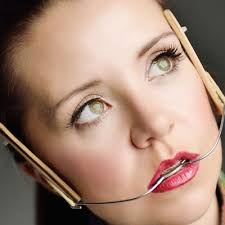When do orthodontists recommend dental headgear is a question many patients and parents ask when learning about orthodontic treatment options. This specialized device is used to correct certain jaw and bite problems that braces alone cannot fix. By applying gentle, continuous pressure, Dental Headgear in Dubai can guide jaw growth, reposition teeth, and improve bite function over time. In this guide, you’ll learn exactly when it’s recommended, how it works, and why it’s an important part of some orthodontic treatment plans.
What is treatment and how it works?
The treatment with dental headgear is designed to address orthodontic problems involving jaw growth and tooth positioning. The device consists of an external frame, usually with straps or pads that rest against the head or neck, connected to braces or other appliances inside the mouth. The applied force can:
- Move teeth backward or forward
- Control jaw growth direction
- Improve alignment between the upper and lower jaws
Orthodontists recommend orthodontic headgear in cases where the upper or lower jaw is growing at a different rate, leading to conditions like overbite, underbite, or excessive tooth spacing. Worn consistently for the prescribed hours each day, it gradually encourages proper alignment without invasive methods.
Importance of treatment:
Wearing dental headgear can be essential for preventing long-term dental health problems. If jaw growth and bite issues are left untreated, they can lead to:
- Difficulty chewing and speaking
- Increased risk of tooth wear and damage
- Jaw pain or TMJ discomfort
- Uneven facial balance
By guiding jaw development during growth years, orthodontic headgear treatment can create a stable, functional bite and support the success of other orthodontic devices like braces. This intervention is often most effective during childhood or early adolescence when jawbones are still flexible and responsive to pressure.
Types of treatment:
There are different types of dental headgear depending on the specific orthodontic issue:
- Cervical pull headgear – Used mainly for overbite correction by moving upper teeth and jaw backward.
- High-pull headgear – Helps control upper jaw growth and position molars correctly.
- Reverse-pull (facemask) headgear – Used for underbite cases, promoting forward growth of the upper jaw.
Each type is custom-designed for the patient’s needs and may be worn during the day, at night, or both, depending on the treatment plan.
Preparation:
Before starting dental headgear treatment, the orthodontic process begins with a thorough examination, including X-rays, dental impressions, and bite analysis. This ensures the chosen device will deliver the intended results. Patients preparing for headgear should:
- Learn how to correctly put it on and take it off
- Follow exact wear-time instructions
- Practice cleaning the device daily
- Prepare for an adjustment period during the first week
Being informed about the process helps improve compliance and comfort.
Aftercare:
Consistent aftercare ensures orthodontic headgear works effectively:
- Clean the straps, pads, and metal parts daily
- Store in a clean, safe place when not in use
- Avoid altering the device yourself
- Remove it before sports or physical activities unless advised otherwise
- Attend all scheduled orthodontic check-ups to track progress
Proper aftercare prevents skin irritation, damage to the device, and delays in treatment.
Ideal candidate:
Dental headgear is most often recommended for:
- Children with developing jaws that need growth guidance
- Teens with significant overbite or underbite issues
- Patients whose bite problems cannot be corrected with braces alone
- Cases with severe spacing or crowding linked to jaw size differences
Adults can also be candidates, though treatment may take longer because their jawbones are fully developed.
How to choose the right clinic?
Selecting the right place for dental headgear treatment involves checking:
- Experience with complex orthodontic cases
- Use of modern, comfortable headgear designs
- Clear instructions and follow-up care
- A personalized approach to treatment plans
Patients should also feel comfortable asking questions about wear time, care, and expected results.
Risks:
Like any orthodontic appliance, Dental Headgear may cause temporary side effects, such as:
- Mild soreness in teeth or jaw
- Skin irritation where straps touch
- Headaches during initial adjustment
- Possible unwanted tooth movement if worn incorrectly
Following instructions closely minimizes these risks.
Benefits:
The benefits of orthodontic headgear include:
- Effective correction of jaw growth issues
- Prevention of more complex orthodontic problems later
- Improved bite function and speech clarity
- Enhanced facial symmetry and profile
- Long-lasting orthodontic results when combined with braces
FAQs:
When do orthodontists recommend dental headgear?
Typically for severe bite problems, jaw growth imbalances, or cases braces cannot fix alone.
How many hours a day should headgear be worn?
Usually 12–14 hours daily, but it varies based on the case.
Is wearing dental headgear painful?
Mild discomfort is normal initially but fades with consistent wear.
Can you eat while wearing headgear?
It’s usually removed during meals unless advised otherwise.
Does dental headgear change your face shape?
It can subtly improve profile by guiding jaw growth, especially in younger patients.
Conclusion:
When do orthodontists recommend dental headgear depends on the severity and nature of bite or jaw alignment problems. This appliance plays a vital role in guiding jaw growth, repositioning teeth, and achieving results that braces alone may not provide. With consistent wear, proper care, and commitment to the treatment plan, dental headgear can help create a healthy, functional bite and improved facial balance that lasts for years.





Comments